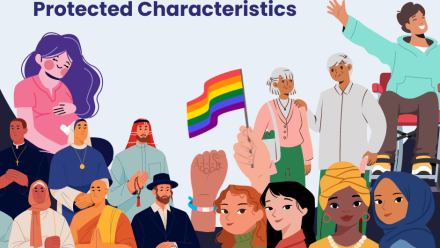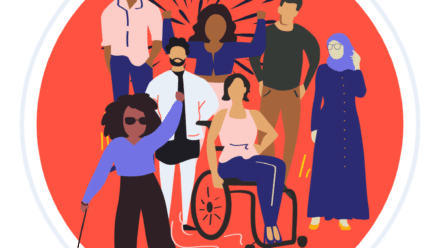Digital equity: a fundamental human right?
21st October 2021 by Raphaele von Koettlitz
Through a series of round table discussions with practitioners from across the UK homelessness sector, we are collectively mapping out what genuine ‘digital inclusion’ might look like. From blue sky thinking, to barriers and solutions, join us on our journey to making digital equity a reality for people experiencing homelessness.
The title may sound provocative. But when we really think about what digital access truly implies, perhaps it’s not so radical after all.
From online shopping, to paying bills, to job seeking, to applying for benefits, and attending doctors appointments, we realise technology allows us to do so much on a daily basis. Digital access on a very basic level means social and economic participation, with direct links to positive health, education and employment outcomes.
We can think of technology simply as tools that help us accomplish the things we want to do. It doesn’t seem so outrageous to categorise digital access as a basic human right when we frame it like this, does it?
Those that can’t access the internet or technology are put at an immediate disadvantage. This has been further highlighted by the pandemic, with shifts to move many services and ways of living and working online.
Digital inclusion has become a bit of a buzzword, that can mean everything and nothing. Supplying devices to people who need them increases digital access, but only if they can use them in a meaningful way. Digital inclusion is therefore a complex, nuanced issue that firstly requires a united approach and a unified understanding of what it actually means. Only then can we start to shape an agenda that genuinely meets the needs of clients.
Diversity and Ability has been delivering digital inclusion programmes since 2014 at organisations such as Crisis Skylight. The links between disablement and homelessness had become very evident through this work, and is something that we felt needed to be addressed. So throughout 2019, in collaboration with Citizens Online, Brighton and Hove Digital and front-line homelessness agencies such as The Passage, Crisis, Homeless Link, Turning Tides and St Mungo’s, Diversity and Ability explored the meaning and impact of neurodiversity on homelessness. The objective was to table the urgency of integrating assistive technology & accessible strategies in supporting literacy needs and self-advocacy.
These conversations were picked back up in the recent round table discussions held throughout the course of 2021. Against the backdrop of the pandemic, questions around access to information and essential digital tools became all the more urgent. These round tables sought to bring together different voices from across the UK homelessness sector to see how, together, we can achieve digital equity and fair participation for those often denied this basic right.
Hosted by Greg Headley, Homeless Link’s Partnership Manager in London and the South, and Atif Choudhury, D&A’s CEO, they ask,
What does true digital inclusion look like for this population?
The practitioners participating in these discussions suggested this involves the following:
- Taking into account varied literacy levels and neurodiversity of clients
- Pitching training at different levels to cater to those with limited digital familiarity
- Providing emotionally sensitive training that incorporates trauma/ psychologically informed approaches
- Helping clients to make an informed decision whether to engage with technology or not; showing people the possibilities technology and the internet offer without pushing it on them
- Embedding digital inclusion across all services and support, not just isolated to ‘digital inclusion’ programmes
- Human connection! Having physical drop-in spaces where people can self-refer to go to for support
- Face-to-face support to help with technical problem solving
- Making sure staff have the confidence and know-how to effectively support clients
- Cross sector partnerships: creating a centralised space for organisations involved in digital inclusion to share best practice and recommendations
So with a bit of blue sky thinking, this is where we’d like to get to! This of course won’t happen with the click of a finger and the wave of a wand, but it’s exciting to see palpable passion and commitment from many practitioners to make this a reality. Diversity and Ability is working collaboratively with the homelessness sector to shape and implement Digital Inclusion Pledges that will accelerate and unify this vision. More on this later!
So what are some of the barriers the sector currently faces?
Here are some of the key barriers identified by practitioners:
- Recognising the need to include neurodiversity and disablement in considerations around digital inclusion
- Catering to extremely different levels of need among clients
- Lack of drop-in spaces that are clearly identified for clients; nowhere to go to troubleshoot problems – “Going online to learn how to get online is not the answer!”
- Ensuring staff are adequately supported to feel confident with IT and can effectively champion digital inclusion
- Carving out time and resources for staff training
- Staff capacity – having the time to provide this support
- Changing the culture and creating buy-in; communicating the importance and relevance to staff at all levels from front-line workers to decision makers
- Fragmented, siloed approaches, “too many organisations trying to say similar things in a different way”
- Disconnect between government framework and front-line reality; lack of funding and shallow objectives eg. “Everyone must get online” but without addressing the issues as to why people can’t or won’t get online
The positive thing about many of these issues is that they are easily fixable! With a bit of creativity and collaboration, there are many solutions we can draw on to dismantle them.
What are the solutions to making digital equity a reality?
Here are some of the quick wins that will help make this a reality:
- Getting rid of jargon and explaining things in a meaningful, straight forward way that’s relevant to the individual and their aspirations
- Making accessible resources in easy to understand visual formats eg. annotated screen shots integrating the client’s own explanations and diagrams
- Making sure those that have never used technology can learn fundamental skills in a dignified way eg starting with the basics for those that need it! For example, turning on a device and navigating the home page are not evident unless you know how
- Recognising that learning can trigger stress, anxiety and shame; gently unpacking a client’s emotional baggage
- Mobilising ‘digital champions’ – staff members that are motivated and IT confident are great resources and can support their colleagues
- Creating a sector-wide joint forum for meaningful action and collaboration to tackle siloed working
- Lobbying government to ensure front-line services are adequately resourced
- Mobilising corporate partners where possible and if appropriate!
This just about wraps up the rich discussions held between practitioners from organisations including St Mungo’s, Thames Reach, Justlife, The Big Issue, Literacy 100 and Groundswell.
The conversation will be continuing shortly- join our working group to create Digital Inclusion Pledges that will be rolled out across the sector. If you’d like to be involved, your voice is very welcome, do contact us. For those that we know already, we’ll be in touch soon! You can also follow our movements on Eventbrite.


